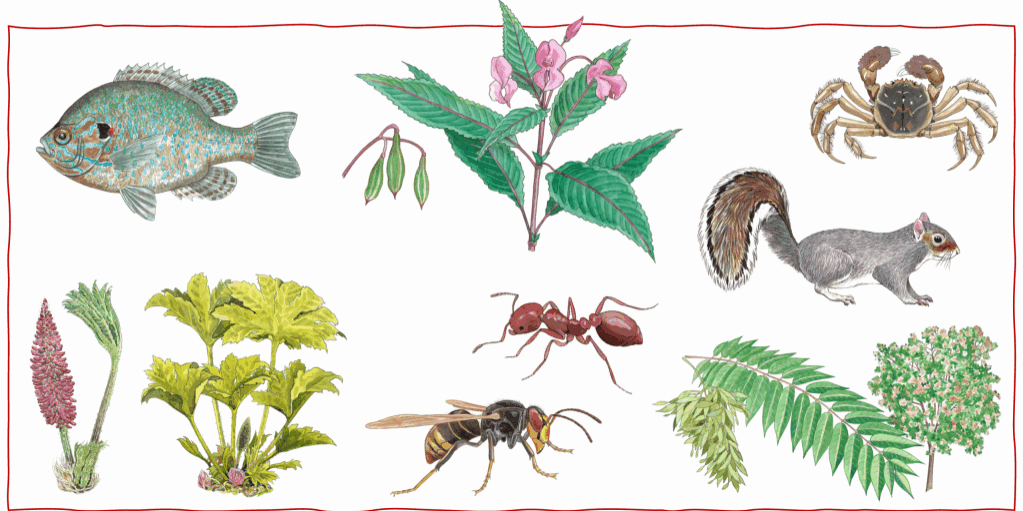Plenty more fish in the… CE synopsis on Marine Fish Conservation!
Natasha Taylor is a fisheries ecologist and data manager at the Centre for Environment, Fisheries and Aquaculture Science, where she has worked on a range of research topics and surveys including the ecology of fish eggs and larvae and fish population management and monitoring.

Have you ever wondered exactly how many fish there are in the sea? Scientists estimate the number to be around 3,500,000,000,000 (3.5 trillion), made up of about 18,000 different fish species [1].
But how do you count the number of fish in the sea, and why would we want to know? The answer to the first part is, with difficulty! In fact, it is a near impossible task to accurately count the number of fish living in our seas, oceans, and coastal waters – we can’t see them to count them, and the number is ever changing as the result of events like predation (being eaten!), fishing and reproduction, and environmental factors such as sea water temperature. But despite the challenge, scientists have doggedly sought to estimate the size of fish populations for over a century. Why?
Marine fish provide food and nutrition for billions of people globally and are important economically as a source of income and employment, particularly in many developing regions. Not only that, but marine fish are vital for the maintenance of healthy ecosystems and are a key food source for other animals including birds, sea mammals and other fish. However, this resource is under threat: from over-exploitation (especially overfishing), pollution, human disturbance and destruction of fish habitats, and our changing climate. This vital resource needs to be protected and this is why it’s so important to know how many fish there are – it provides a way not only to understand the impacts of the threats to fish populations, but also to measure how effective the actions we humans can take to help conserve marine fish and their habitats might be.

The Marine Fish Synopsis aims to help researchers, fisheries managers and stakeholders address this exact need. This newly updated version of the synopsis (with additional actions) focusses on one of the main threats, overfishing – the harvesting of too many fish from the sea for populations to sustain themselves – and synthesizes the global evidence for effects of interventions to conserve fish numbers, or reverse the effects of sometimes decades of fish population decline.
Information on the size of marine fish populations is generally collected from two sources – scientific surveying and monitoring (known as fisheries independent data), or from fishers themselves when they are catching fish commercially or for subsistence (fisheries dependent data). Combined, these can provide information on all species and sizes of fish living in different marine environments and allow scientists to track changes in population size over time. The Marine Fish Synopsis includes studies using either, or both, of these methods.
We have summarized evidence for 120 different interventions covering every conceivable way of conserving and protecting fish that may be threatened, directly or indirectly, by the harvesting process. This includes fish species that are fished commercially or for subsistence, as well as other species that have no commercial value but are unwantedly captured alongside or suffer disturbance or destruction of habitat. The evidence summarized includes ways fishing activity may be controlled within an area, such as by ceasing or prohibiting all commercial fishing and establishing temporary fishery closures. It also covers actions aimed at reducing the unwanted fish catch or improving the survival of captured fish that are returned to the sea, using changes to fishing gear such as a larger mesh size or different hook type, fitting escape panels to trawl nets and even deploying fishing gear at selected depths to avoid catching unwanted species.

We hope that the Marine Fish Synopsis will improve the ability of managers, stakeholders and communities to make evidence-based decisions, and ensure that there is a plentiful enough supply of fish to keep the challenge of counting them alive for many decades to come!
The next stage will be for an expert panel to assess the effectiveness of each intervention based on the summarized evidence. We’ll add the results to the Conservation Evidence website as soon as they’re ready. Over the longer term, we look forward to regularly expanding and updating the synopsis with the latest evidence.
Further reading:
[1] https://www.worldatlas.com/articles/how-many-fish-are-there-in-the-ocean.html



